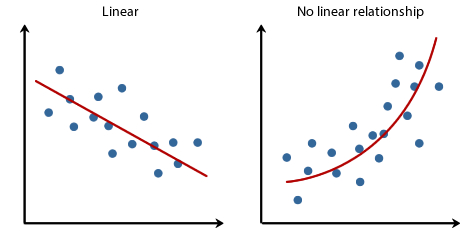This article was written to explain the basics of machine learning for those who want to get started learning machine learning.
In this article, I will explain what machine learning is, how it is used, the types of machine learning, and the basics of deep learning, a subfield of machine learning.
What is Machine Learning?
In this section, we will examine what machine learning is under two headings. Historical development and, the definition of machine learning.
Historical Development of ML
Arthur Samuel described it as: “the field of study that gives computers the ability to learn without being explicitly programmed.”
This definition is a bit old, but a sufficient explanation to grasp the logic. After this explanation, let’s look at a more modern explanation, by Tom Mitchell.
Tom Mitchell: “A computer program is said to learn from experience E with respect to some class of tasks T and performance measure P, if its performance at tasks in T, as measured by P, improves with experience E.”
E = experiance T = task P = probability
Definition of Machine Learning
In this section, we will learn how machine learning works and how it differs from traditional programming and reinforce the above concepts.
In traditional programming, the programmer gives the data and program (rules) to the computer, and the computer produces an output.

In machine learning, the programmer (data scientist) gives data and output to the computer so that the computer eventually produces the program.

Learning Types of Machine Learning
In this section, we will learn about the commonly used learning types of machine learning. This chapter will teach you about how machines learn.
This section consists of 3 subtitles: Supervised Learning, Unsupervised Learning, Reinforcement Learning.
Supervised Learning
All data is given to the computer and the desired result is transferred from the dataset to the computer, and the computer can classify or make predictions according to these data.
For example, if we want to predict the weather for tomorrow, we can transfer the weather data to the computer and make the computer predict the future weather.
There are 2 titles in Supervised Learning, one of them is Regression and the other is classification.
Regression Problem

The regression model is used when it is desired to predict the results on an infinite output. As an example, next year’s earnings graph based on a company’s 12-month income
Regressions can be prepared in the form of linear regression or polynomial regression. Which one to use depends on the dataset.
Linear Regression: It is a statistical method that examines the linear relationship between two variables.
Polynomial Regression: Polynomial regression is used if the data do not fit well on the linear graph. The quadratic function can sometimes predict data better.
Classification Problem

It is used to categorize the data, if a data set can be mapped to at least 2 categories, the classification method can be used.
For example, classification can be used for true-false examples, in some examples, the number of categories may be more than 2, but the result should still be yes or no.
Unsupervised Learning
In unsupervised learning, there is no category of data, in short, all the data in the data set are in the same category, the computer must find a relationship between these data.
While solving problems in unsupervised learning, we have little or no idea about the outcome. With unsupervised learning, there is no feedback based on the prediction results.
Clustering and Non-Clustering
It is clustering, to divide the data in the same category into different categories. For example, describing animals and plants…
Non-Clustering, you are not given data directly, instead the machine tries to identify the data.
Reinforcement Learning
Machine learning approach inspired by behaviorist that deals with what actions subjects must take to achieve the highest amount of reward in an environment.
To put this approach simply, the machine tries to implement the behaviors it used to do for more rewards.
The machine uses actions it has experienced before to obtain rewards, but it must also discover if there are actions it can get more rewards from in a situation it encounters.
Deep Learning
Let’s talk a little bit about deep learning being a subset of machine learning. In this section, the basics of deep learning will not be explained.
Deep learning attempts to imitate how the human brain can process light and sound stimuli into vision and hearing.
Deep learning uses a cascade of nonlinear processing unit layers in order to extract or transform features (or representations) of the data. The output of one layer acts as the input of the next layer.
Among the machine learning algorithms that are currently being used and developed, deep learning absorbs the most data and has been able to beat humans in some cognitive tasks.
Advices For Learning ML
Although machine learning and artificial intelligence is a field that attracts many people, it is not very suitable for beginners.
It will be more beneficial for you to improve yourself in areas such as statistics, data analysis, programming, mathematics, data visualization before such areas.
Once you gain a degree in these areas, you can better understand the purpose and operation of machine learning and create better algorithms.
Resources
- Reinforcement Learning: An Introduction (Richard S. Sutton ve Andrew G. Barto)
- Introduction to Deep Learning – https://developer.ibm.com/
